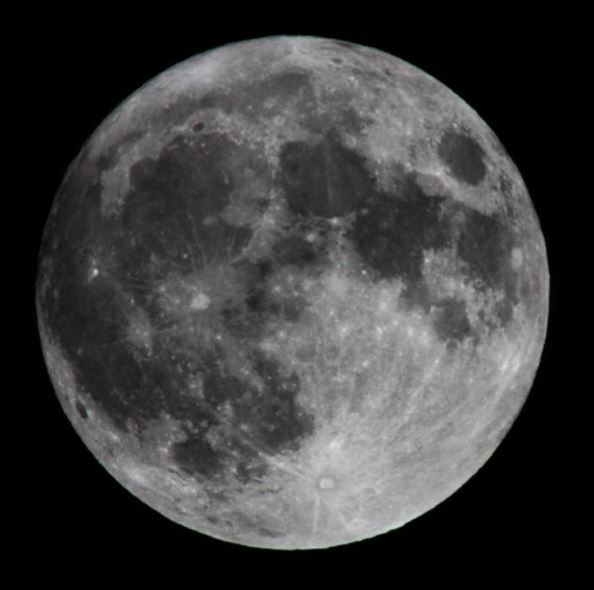When is a Blue Moon not a Blue Moon ?
Most people, including me, would say that January 31st 2018 is a Blue Moon as it is the second Full Moon of the month. Similarly March 31st 2018 is a Blue Moon. This is now the widely-accepted definition of a Blue Moon but it hasn’t always been so, as I found out when I decided in an idle moment to do some googling to find out why the adjective “blue” is used to describe such a Moon . I did get an answer to this (more on this at the end of the article). I also found out that there is a much older meaning to the term.
To understand the older meaning, we need to look at the names given to the Full Moons during a year. Chris Reed wrote a nice article in a recent newsletter about the names, giving those used in a Native American culture. Here I will give the names commonly used in England a few centuries ago. The Moon names are linked to the 4 seasons with each season starting on the appropriate Solstice or Equinox. Each season usually has 3 Full Moons in it. Note that word “usually”! Winter starts on the Winter Solstice ; its three Full Moons are Moon After Yule, Wolf Moon and Lenten Moon. Spring starts on the Spring Equinox and its three Full Moons are Egg Moon, Milk Moon and Flower Moon. Summer, from the Summer Solstice, has Hay Moon, Grain Moon and Fruit Moon. Finally, autumn from the Autumn Equinox has Harvest Moon, Hunter’s Moon and Moon Before Yule.
A Blue Moon arises in this older definition because there are usually but not always 3 Full Moons each season, as a calendar year is not exactly 12 lunar cycles long. It is a closer to 12.4 cycles. If we just kept cycling through the 12 names each time there was a Full Moon without making allowance for this, the descriptions would soon drift away from the season they were describing. What we notice is that every so often (in fact every 10 “seasons”), there is a season with 4 Full Moons in it. A new name is needed for that extra one and it is termed a Blue Moon.
Dates for some Blue Moons
The most recent Blue Moon using the older definition was in 2016, when Spring had Full Moons on March 23rd, April 22nd, May 21st and June 20th It is actually the third of the set of 4 which is termed a Blue Moon, so it was May 21st which was the Blue Moon. The next Blue Moon will not be until May 18th 2019. For reasons which totally elude me, one of the key players in deciding Blue Moons is the Maine Farmers’ Almanac. They define the year into 4 seasons of equal length which does not take account of the changing speed of the Earth round its orbit during a year, so their Blue Moons do not necessarily fall on the same date as those calculated using the astronomical year.
Why choose the adjective “blue”?
Of all the possible words to describe the extra Full Moon in a season, there seems to be no reason for choosing “blue” because the Moon is certainly not blue then or at any other time. There are various versions of how this came about and the one I like comes from the writings of Cardinal Wolsey in 1528. He was being sarcastic about the importance that some clergy of the Church, his intellectual enemies, claimed should be attached to their statements . He said “Yf they saye the mone is belewe, We must beleve that it is true.” – which in modern English is “if they say the Moon is blue, we must believe that it is true”. In other words, if a member of the Church says something which is impossible (choosing the blue moon at random as an example), then we are still expected to believe them.
From this original phrase, the idea of a blue moon came to mean something which was impossible and over time this changed into something which was very unlikely and hence the current usage in the phrase “once in a blue moon”.

By Katherine Rusbridge
Jan 2018
